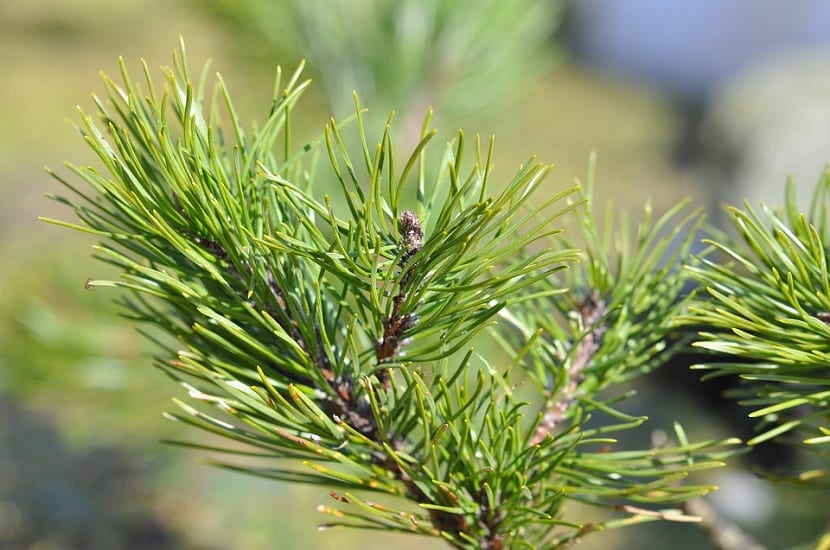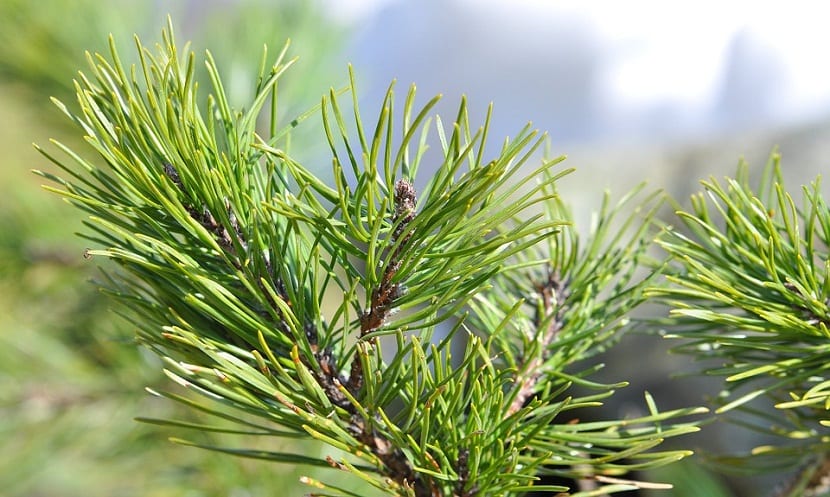
The Siberian pine is a tree that stands out for the large size it reaches and it has evergreen leaves that are shaped like needles. It is a tree that began to be cultivated in Europe at the beginning of the XNUMXth century.
It grows in extremely cold environments and being in environments with temperatures below 50ºC, it does not suffer any type of deterioration.
Habitat and distribution of the Siberian Pine

It is a conifer originally from Siberia, which grows around the Stanovoi Mountains in the south of the Republic of Saja, around the Ural Mountains in the east, in Igarka, around the lower valley of the Yenisei River, and in the south towards central Mongolia.
To the north of its range, the Siberian pine grows in low-rise areas, normally between 100-200m and in the areas that are in the south, it is usually a mountain tree that grows at heights of approximately 1.000-2.400m.
Characteristics of the Siberian Pine
Upon reaching maturity, the Siberian pine can reach a height of approximately 30-40 meters and have a trunk of around 1,5 t in diameter. This pine can last a maximum of 800 to 850 years.
Siberian pine belongs to the group of white pines known as Pinus, of the subgenus Strobus.
Its leaves are in sets of five and it has a deciduous pod, normally reaching a length of between 5-10cm. The strobili of the Siberian pine, also called Pinus sibiricaThey reach between 5-9 cm long and their seeds are usually 9-12 mm long.
Siberian pine is considered by several herbarians to be actually a variety of pine Swiss stone pine, also known as “Pinus cembra”, with which it shares great similarity. Although they are distinguished, because the pinus sibirica has larger strobili and its needles have three resin canals and not two, as occurs with the stone pine.
Pests of Siberian Pine
As with other white pines, both European and Asian, the Siberian pine tends to have a great resistance to the presence of the fungus "Cronartium ribicola ”, which causes a fungal disease known to have been accidentally brought to North America from Europe, generating a great disaster among numerous bank pines originating in America.
We can say that Siberian pine has great value in research about genetic modification and hybridization, since it has the purpose of creating varieties capable of resisting said fungus.
Uses of Siberian Pine

Its wood has multiple uses, of which we can highlight the round wood, used for the creation of posts, or the sawn wood, used within the carpentry for the manufacture of furniture, musical instruments, utensils, plates, boxes and even for wood carving. It is also used in light constructions.
The wood of this conifer is characterized by being light, soft and have a pink hueIn addition, it provides an excellent texture, within applications that stand out for being a little finer. In the same way, the trees are intervened by the resin, especially for the purpose of making turpentine.
The edible seeds of the Siberian pine have a really high fat content, of approximately 65%, in addition, it has a large amount of vitamins.
During the harvests that take place in the Altai Mountains, it is possible to obtain around 200 or 300kg of nuts and of "nuclei", that is to say, of seeds of the pinus sibrica.
Its seeds stand out for the fact that they must be separated from the cones through a mechanical cone-thresher, this is due to the fact that pineapple scales rarely open and consequently, they do not allow the seeds to be released (within nature, this occurs due to the action of the beak that the Eurasian Nutcracker possesses).
These seeds are also used and they are known by the name of pine nuts.